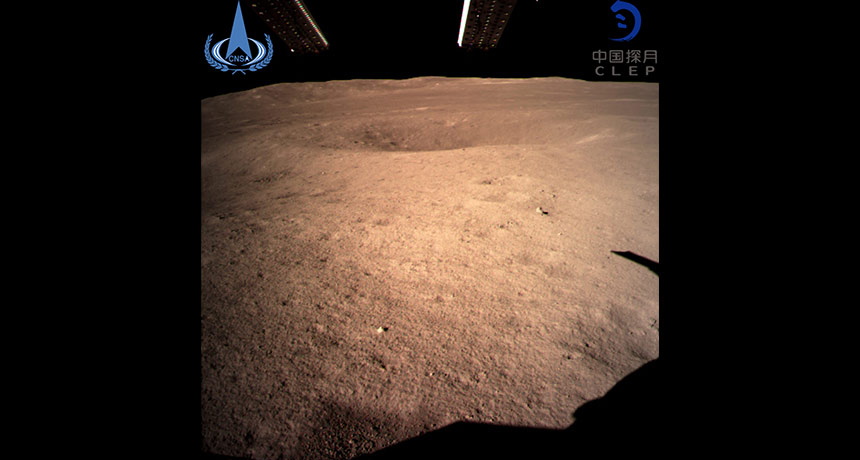China just landed the first spacecraft on the moon’s farside

China’s Chang’e-4 lander and rover just became the first spacecraft to land on the farside of the moon.
The lander touched down at 9:26 p.m. Eastern time on January 2, according to an announcement from the China National Space Administration. The spacecraft is part of a series of Chinese space missions named Chang’e (pronounced CHONG-uh) for the Chinese goddess of the moon.
A small rover dubbed Yutu 2, or Jade Rabbit 2, rolled off the craft several hours after landing. The rover will explore the terrain around the 186-kilometer-wide Von Kármán crater located inside the 2,500-kilometer-wide South Pole–Aitken basin. The basin, one of the largest and oldest impact features in the solar system, could contain exposed parts of the moon’s interior that might reveal details of its formation and early history (SN: 11/24/18, p. 14).
Chang’e-4 will measure some of the region’s composition, use ground-penetrating radar to probe just below the surface, and take panoramic images of a landscape that has never been seen from the ground before. It will also make measurements of charged particles and radiation, which could help support future astronaut missions, and test whether plants and insects can grow together on the moon.
Because the moon always shows the same face to Earth, it is impossible to communicate directly with spacecraft on the farside. A relay satellite named Queqiao, or Magpie Bridge, that launched in May 2018 will beam signals between Chang’e-4 and Earth (SN Online: 5/20/18).
The landing marks China’s second lunar landing, and a step towards more ambitious moon missions. The Chinese space agency is planning another mission to collect moon rock samples later in 2019.